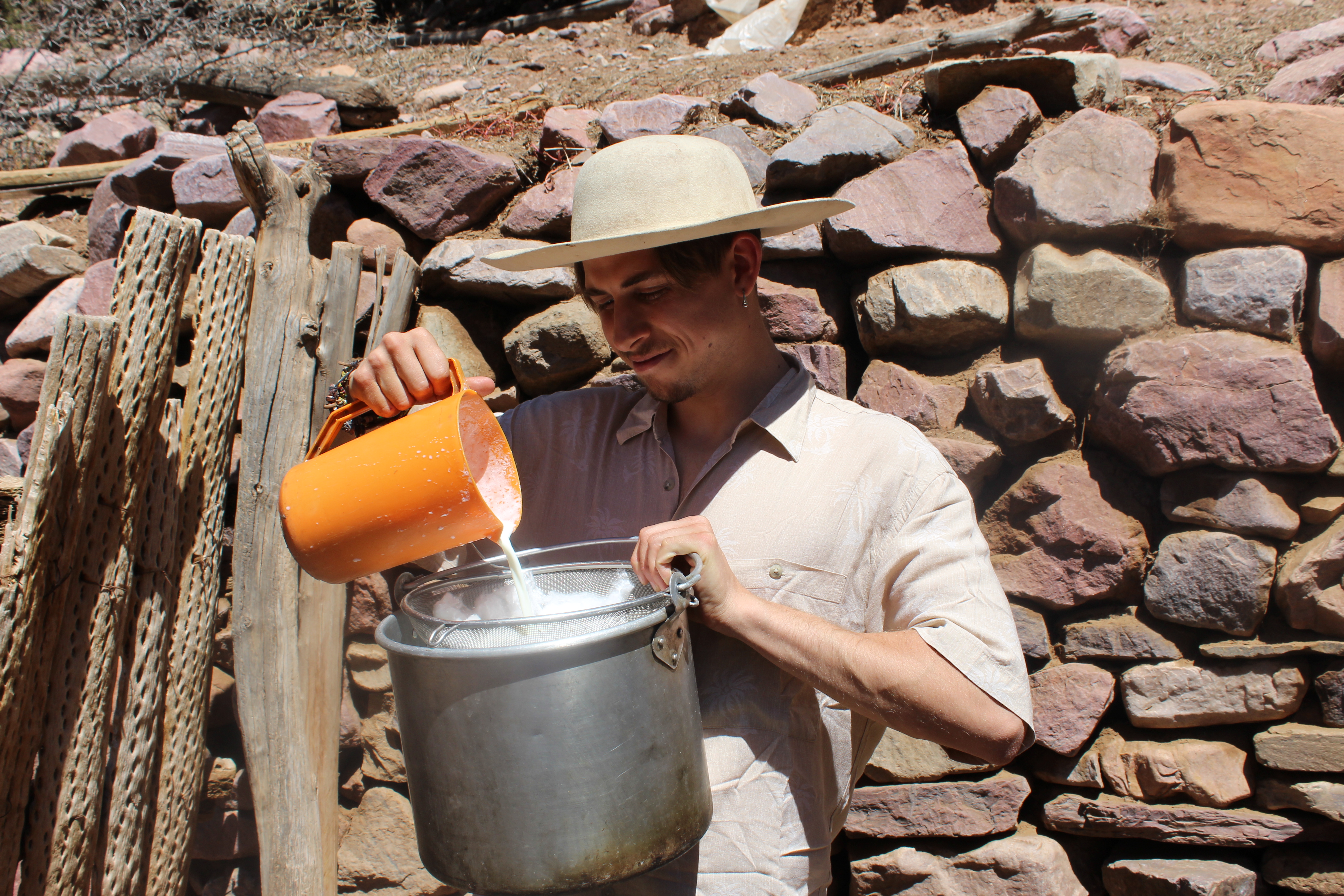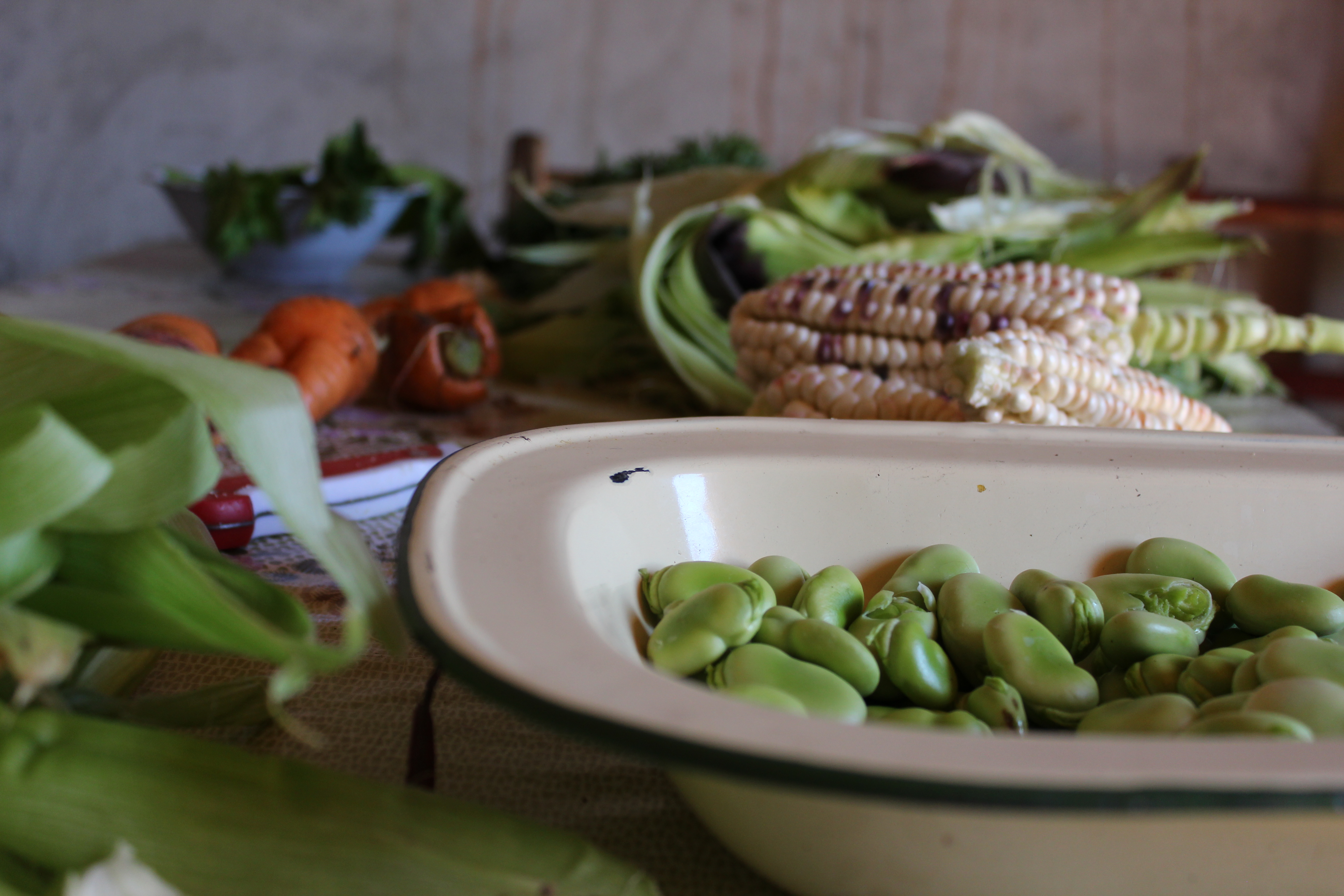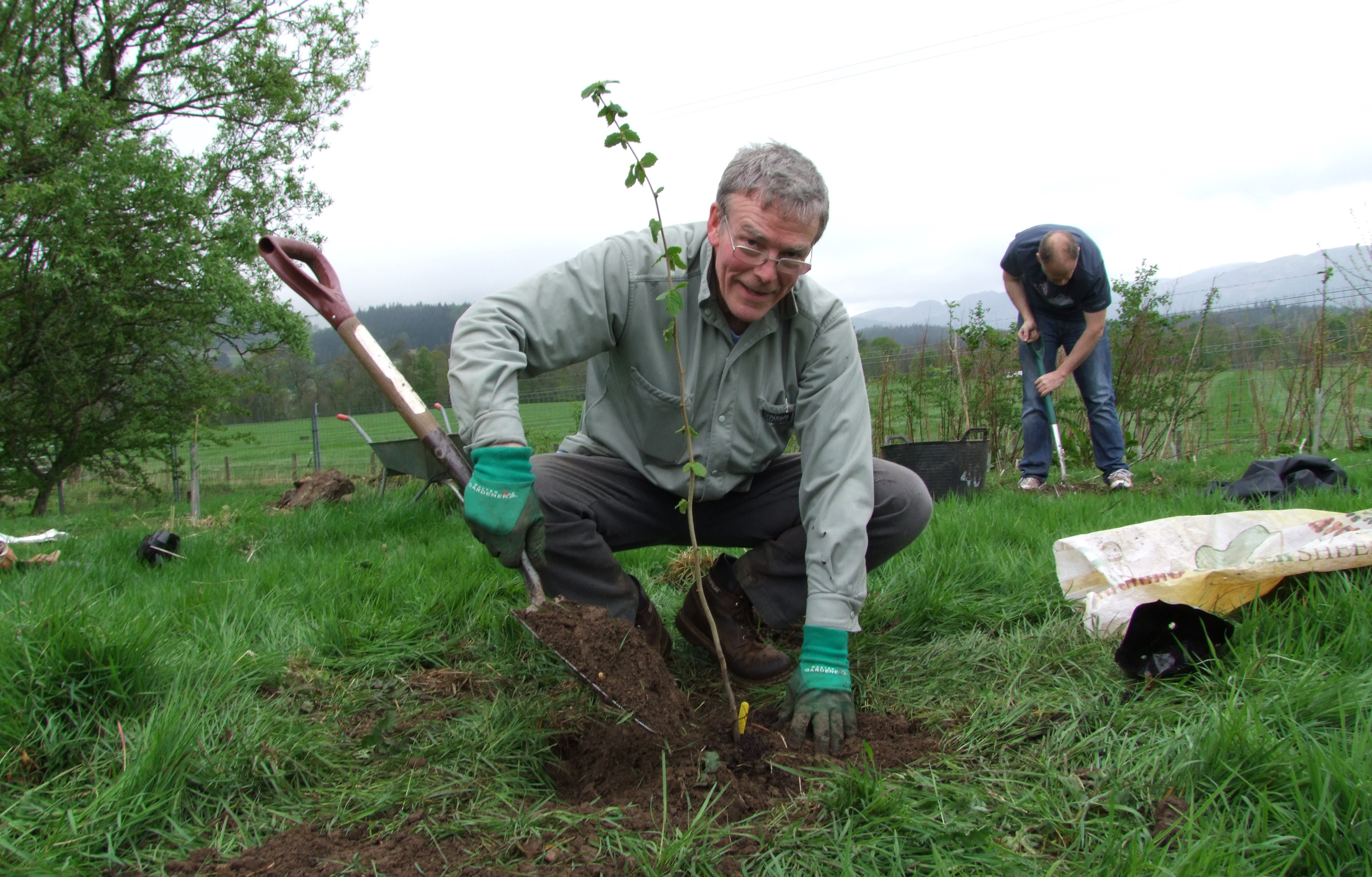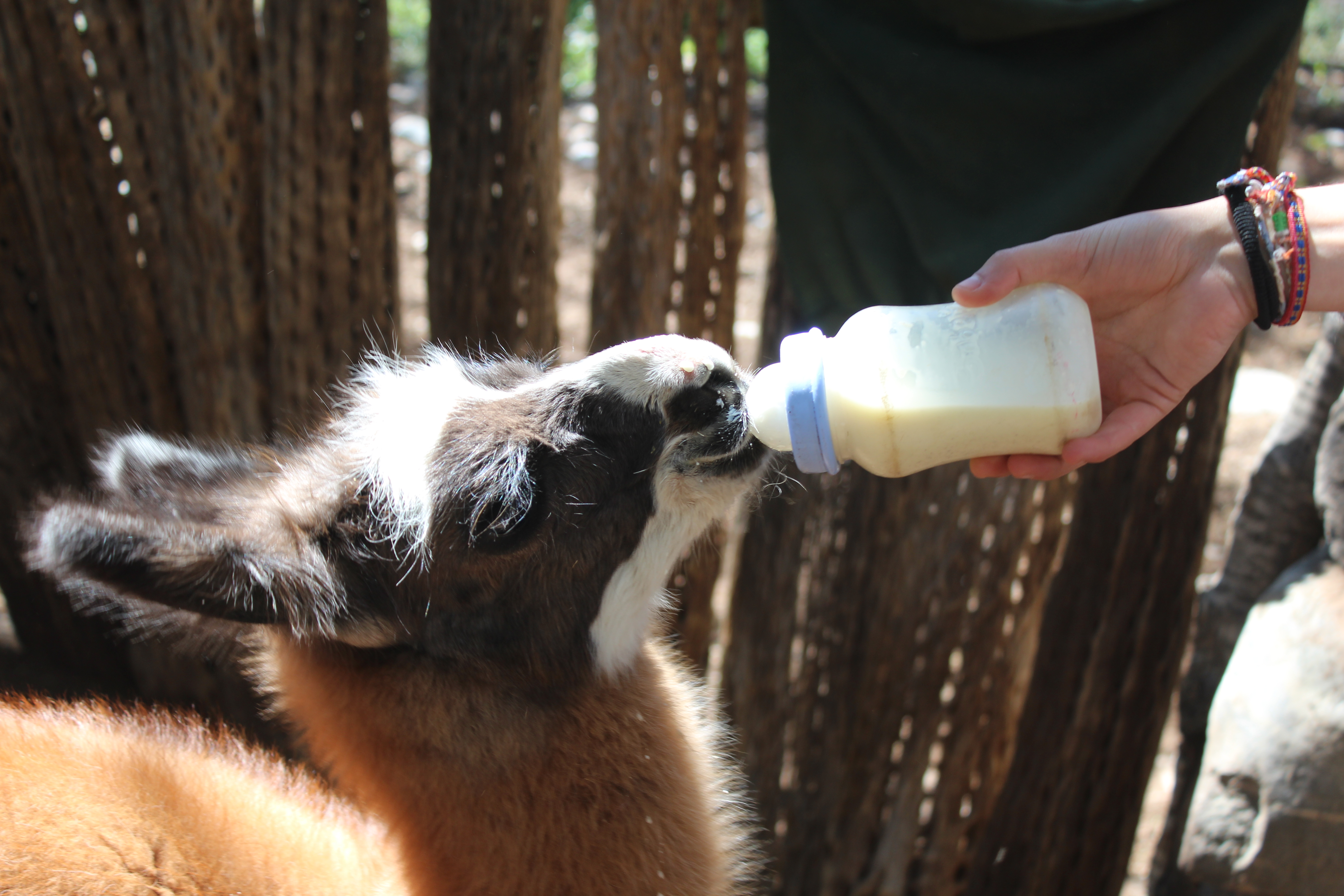20-08-2020
Agrotourism: Tourism and the rural world, a possible pairing?
Carla Izcara | Alba SudThe debate about the transformation of the tourism sector, aggravated by the COVID-19 pandemic, brings together different terms around proximity tourism. Agrotourism is presented as an option to complement farming activities with a touristic offer.

Crédito Fotografía: Papa de Ocumazo, Argentina. Imagen de Carla Izcara.
The first contact between the rural world and tourism could be described as problematic. The principal problems are the competition for space, the workforce, and natural resources. Also the changes in land use and the abandonment of traditional agricultural practices through the introduction of intensive agricultural activities linked to market demand (De Jesús et al., 2017).
Gascón (2018) helps us to understand this relationship presenting a critique of the linkage theory between tourism and agriculture based on Latin-American cases. In the first place, they believed in a natural link between the tourism industry and the agricultural sector; the tourism settlement would need nourishment, and having the local producers as the only suppliers would be enough to provide them. This natural link did not work, according to the theory defenders, because of a reticence to change of the rural community, the lack of infrastructures, and the predominance of the large estate. From this experience, they detected that an accompaniment or external push was required to get the link done. Even so, there were local constraints to growth and a lack of experience in commercialization. At the same time, tourists preferred known products according to their diet. This led those who prescribed the benefits of this link to go a step further and recommend to local producers to adapt their offer and their production model to the requirements of the tourism market. However, this change has carried risks such as the increase in prices of some products making them unaffordable for the local population, or the increase in the value of the lands generating the expulsion of the local producers and population (Gascón, 2018). Therefore, it is very important to support tourist initiatives that do not change the production model and strengthen the local economy such as some tourist initiatives carried out in agricultural holdings aligned with the existing activities and as an economic complement (Gascón, 2019). In this case, according to Barrera (2006), the motivations the agricultural companies have to implement new activities are to diversify risk and generate additional incomes. Among these new activities, we could find agrotourism.
Agrotourism: What it is and what characterizes it?
There is some confusion around the meaning of “agrotourism” as it has been used alongside other expressions like “farm tourism” or “rural tourism”, equally (Phillip et al., 2010). Nevertheless, after the review of academic literature, agrotourism could be classified as a typology of rural tourism (Sayadi & Calatrava, 2001; Blanco & Riveros, 2010; Choo & Jamal, 2009). Its principal characteristic, if we adhere to the strict definition of the term, is that the activities are developed in small and medium scale agricultural holdings, farms or country houses (Blanco & Riveros, 2011; Hernández-Mogollón et al., 2011; Paül & Araújo, 2012) where tourism is not the main economic activity of the people who provide the service but it represents an extra income (Iakovidou & Turner 1995; Choo & Jamal, 2009; Blanco & Riveros, 2011; Paül & Araújo, 2012; Ragno & Pashikhina, 2018). In some cases, it has meant the generation of salary for the rural woman (Iakovidou & Turner 1995).

Farm activity, Hornaditas, Argentina. Picture of: Carla Izcara.
The activities offered under the name of “agrotourism” are based on work and country lifestyle (Hernández-Mogollón et al., 2011); at the same time, it can be complemented with an accommodation offer (Blanco & Riveros, 2011) or other tourist experiences related to sports, gastronomy or Artcraft, being these last two the favorites of the tourists(Saydi & Calatrava, 2001). In this kind of proposal, it exists direct contact between the farmer and the tourist (Paül & Araújo, 2012) and can contribute to the sustainable development of the rural areas (Evgrafova et al., 2020).
Concerning the environmental sustainability of the tourist activity, the authors Choo and Jamal (2009) question if agrotourism should be considered sustainable in case the agricultural practices developed in that territory are not? Following this logic, to consider agrotourism as sustainable it would have to be developed just in agricultural holdings with good environmental practices. But even if this was the case, the sustainability of tourist activity would still not be ensured.
Furthermore, there is a lack of awareness about this type of tourism because the experiences are normally commercialized under other names, more attractive in commercial terms (Blanco & Riveros, 2010) and, accordingly, the tourist who practice agrotourism does not know the term (Sayadi & Calatrava, 2001; Leco et al., 2013). This type of tourist is interested in nature, the rural world its culture, and hospitality (Choo & Jamal, 2009; Hernández-Mogollón et al., 2011; Leco et al., 2013). Normally they are young, between 25 and 45 years old, with a medium-high education level, they come from urban areas and with little or no connection with the countryside (Sayadi & Calatrava, 2001; Leco et al., 2013).
Agrotourism strengths
As we have already mentioned before, the main strength of agrotourism is that it's an option to diversify the family and local economy (Sayadi & Calatrava, 2001; Choo & Jamal, 2009; Hernández-Mogollón et al., 2011; De Jesús et al., 2017), which allows maintaining an economy based of agricultural activities of small and medium-sized companies (Blanco & Riveros, 2010; Candelo et al., 2019) while preventing from rural depopulation. At the same time, it helps to develop agriculture, ranching, and forest activity (Sayadi & Calatrava, 2001; Blanco & Riveros, 2010). Therefore, develop agrotourism projects could attract investment and improvement in infrastructure, quality of life and work (Candelo et al., 2019).

Vegetables from Ranges, Argentina. Picture of: Carla Izcara.
On the other hand, it is attributed to an important landscape conservation factor as it is a minority activity that implies the movement of few tourists and therefore, large infrastructures are not required. Likewise, as the main attraction is the natural environment it forces to preserve it (Hernández-Mogollón et al., 2011). However, agrotourism does not only permit the conservation of landscapes and ecosystems (Choo & Jamal, 2009; Blanco & Riveros, 2010) but also the conservation of the historical and cultural heritage of rural areas (Sayadi & Calatrava, 2001; Hernández-Mogollón et al., 2011).
Concerning social impact this typology of tourism contributes to the revalorization of local products and the artisanal forms of production (Sayadi & Calatrava, 2001; Blanco & Riveros, 2010) in turn; it generates recognition of rural work in society and specifically rural woman work (Hernández-Mogollón et al., 2011). From this relationship between tourism and agriculture awareness of local culture can be created and the community identity can be strengthened (Candelo et al., 2019). It has also been argued that building a tourism image-based of agriculture can help to moderate some of the negative stereotypes that people have of some countries (Candelo et al., 2019).
Limitations and complexity of the term
Until now, agrotourism has been presented as a tourist alternative, environmentally-friendly that generates positive impacts on rural economies. Nevertheless, in its development, it does not be exempt from inconsistencies that have limited the positive impacts described.
The introduction of tourism activity in rural areas can cause negative impacts on a social level. The close exchange between locals and visitors can disrupt the relationships and traditional values of the communities (Choo & Jamal, 2009). In turn, different producers have been reluctant to incorporate tourism activities since they do not provide enough economic benefits and they perceive the sociocultural impacts as negative (De Jesús et al., 2017). On the other hand, the opposite could happen to families that decide to abandon the agricultural activity to work exclusively in tourism, becoming dependent on such an unstable industry as tourism. Additionally, these proposals would not be classified as agrotourism anymore as the agricultural activities would have moved into the background and would be carried only to show them to the tourists. In these cases, there is a danger that the agricultural activities become a performance interfering with the supposed authenticity of the activity. Even so, authenticity can be perceived differently by the tourist and the host (Philip et al., 2010) owing to the stereotypes and romanticization of the rural lifestyle.

Visiting an orchard from the United Kingdom. Source: Blair Urquhart, under creative commons license.
This last point leads us to the current discussion about the term “agrotourism”. Ragno and Pashikhina (2018) raise the following question: is it obligatory or the agricultural holding to be active to classify it as agrotourism? Different authors agree that to be considered as agrotourism the farm must be active in which the main economic activity is agriculture. If the principal activity was tourism, it would be classified as rural tourism. Other experts disagree and affirm that it could be considered agrotourism as a connection with the agricultural heritage is developed (Philip et al., 2010). Nor is it clear what we mean by agricultural holding, ranch, farm or country house, the place where the tourism activity takes place. In the rural debate, issues as the dimensions of the land, the percentage of earnings from agricultural activities, and the experience and motivation of the individuals are considered important aspects for its definition (Philip et al., 2010). In Spain, for example, the legislation varies in each autonomous community, making common consensus difficult. Besides, the term agrotourism is not taking into consideration in all communities (González, 2016). As well, even being a tourism power, it has not opted for this type of tourism (Sayadi & Calatrava, 2001).
Moreover, it is important to emphasize the need of rethinking what we understand for tourism and how we differentiate it from leisure or other recreational activities. Agrotourism, even including accommodation in many of its products, can be practiced in other forms such as one-day excursions. If we abide by the strict definition of tourism from the World Tourism Organization, it is not clear whether it could be considered tourism as it must be a displacement and overnight outside the usual residence. The proliferation and revaluation of proximity tourism that we are experiencing, highlights once again the need to review these terms and the relationship between leisure and tourism.

Farm activity, Talapazo, Argentina. Picture of: Raúl González.
Another common obstacle of tourism in rural areas is the lack of training in tourism for farmers; in addition to the difficult accessibility to some areas and the absence of communication technologies (González, 2016).
Finally, if we analyse the possible impacts of agrotourism with a gender perspective, because of the gendered division of housework, the tasks made by the woman in family-run business can be susceptible to being invisible, little recognized, and sometimes unpaid. In other cases, the impact is the opposite; the tourism becomes a tool for the real empowerment of woman being a transforming element in traditional gender roles (Cañada, 2019).
Final thoughts
It is time to rethink tourism, leisure, and recreation time. Proximity tourisms, and specifically agrotourism, are an opportunity to redistribute tourist flows and mitigate the negative impacts of the rural exodus. Agrotourism, the production, and sale of local products or recreational activities are opportunities to guarantee extra income to these small businesses of a mostly family nature (Barrera, 2006); always bearing in mind that tourism must complement agricultural activities or other activities and in this way strengthening the local economy.
In this article, we have been able to verify how, even the general lack of awareness consensus around the term; this type of tourism can generate very positive impacts on the territory such as the revaluation of the local culture and the landscape. Finally, for this to happen, there must be a political will facilitating the accessibility and the arrival of infrastructure and financial resources in rural areas (Barrera, 2006); as well as the participation and involvement of the local population in tourism activity.
Barrera, E. (2006). Un agronegocio para el desarrollo de los territorios rurales. En: Vieytez, C. (ed.), Agronegocios alternativos. Enfoque, importancia y bases para la generación de actividades agropecuarias no tradicionales. Capítulo X. Editorial sudamericana. En prensa
Blanco, M. & Riveros, H. (2010). El agroturismo como diversificación de la actividad agropecuaria y agroindustrial. En: IICA (ed.), Desarrollo de los agronegocios y la agroindústria rural en América Latina y el Caribe: Conceptos, instrumentos y casos de cooperación técnica. (117-125) San José: IICA
Candelo, E., Casalegno, C., Civera, C. & Büchi, G. (2019). A ticket to coffe: Stakeholder view and theoretical framework of coffee tourism benefits. Tourism Analysis, 24, 329-340.
Cañada, E. (2019). Transformaciones en las relaciones de género en experiencias de turismo comunitario en Centroamérica. Barcelona: Alba Sud Editorial, Informes en Contraste, núm. 7.
Choo, H. & Jamal, T. (2009). Tourism on organic farms in South Korea: a new form of ecotourism. Journal of Sustainable Tourism, 17(4), 431-454.
Evgrafova, L., Izmailova, A. & Kalinichev, V. (2020). Agrotourism as a factor of sustainable rural development. IOP Conference Series: Earth and Environmental Science 421.
Gascón, J. (2018). Turismo, agricultura y alimentación. De la teoría del enlace a la patrimonialización de la gastronomía. En: Medina, F. & Leal, M (ed.), Gastronomía y turismo en Iberoamérica (16-32) Gijón: TREA.
Gascón, J. (2019) Turismo y transformación del espacio rural. En: Cañada, E. (ed.) El turismo en la geopolítica del Mediterráneo (41-45). Barcelona: Alba Sud.
González, L. (2016). Análisis del agroturismo en España y otros modelos europeos. Propuestas para su desarrollo (Tesis de maestria). Universidad de Oviedo, España.
Hernández-Mogollón, J.M., Campón-Cerro, A.M., Leco-Berrocal, F. & Pérez-Díaz, A. (2011). Agricultural diversification and the sustainability of agricultural Systems: possibilities for the development of agrotourism. Environmental Engineering and Management Journal, 10(12), 19911-1921.
Iakovidou, O. & Turner, C. (1995) The Female Gender in Greek Agrotourism. Annals of Tourism Research, 22(2), 481-484.
De Jesús-Contreras, D., Thomé-Ortiz, H., Espinoza-Ortega, A. & Vizcarra-Bordi, I. (2017) Turismo agroalimentario, una perspectiva recreativa de los alimentos emblemáticos desde la geografía del gusto. Estudios y Perspectivas en Turismo, 26, 549-567.
Leco, F., Pérez, A., Hernández, J.M. & Campón, A.M. (2013). Rural Tourists and Their Attitudes and Motivations Towards the Practice of Environmental Activities such as Agrotourism. International Journal of Environmental Research and Public Health, 7(1), 255-264.
Paül, V. & Araújo, N. (2012). Agroturismo en entornos periurbanos: enseñanzas de la iniciativa Holeriturismo en el Parc Agrari del Baix Llobregat (Cataluña). Cuadernos de Turismo, 29, 183-208.
Phillip, S., Hunter, C. & Blackstock, K. (2010). A typology for definint agritourism. Tourism Management, 31, 754-758.
Ragno, R. & Pashikhina, A. (2018) 1er Congreso Mundial de Agroturismo WCA 2018. Alba Sud, 25/11/2018.
Sayadi, S. & Calatrava, J. (2001) Agroturismo y desarrollo rural. Situación actual, potencial y estrategias en zonas de montaña del Sureste español. Cuadernos de turismo, 7, 131-157.
This article is published in the framework of the project "Research Platform on Tourism, Human Rights and Gender Equity" developed by Alba Sud with the support of the Catalan Agency for Development Cooperation (ACCD) (call 2019).
Noticias Recientes
-
Presentación del informe de Érica Schenkel «Turismo social en Argentina»
Noticias Generales | 08-11-2024 -
APAMI: rescate de la fauna en un contexto de urbanización turística
Noticias Generales | 07-11-2024 -
II Conferencia Regional de Turismo Ecopoltur / IGU
Noticias Generales | 06-11-2024 -
Realismo turístico y los límites del decrecimiento
Noticias Generales | 05-11-2024 -
Turismo social en Argentina: desarticulación de una política pública con voluntad democratizadora
Noticias Generales | 02-11-2024 - | Archivo de Noticias »

